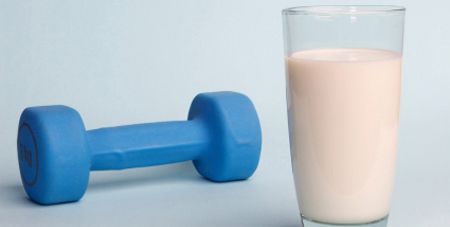For Menopausal Patients: Taking an Active Stand Against Osteoporosis
Osteoporosis is a disease in which the bones lose their content of minerals, particularly calcium. When this occurs, the bones become weakened an prone to fracture. Common sites of fracture include the spine, hip, ribs, and wrist.

Osteoporosis is a disease in which the bones lose their content of minerals, particularly calcium. When this occurs, the bones become weakened and prone to fracture. Common sites of fracture include the spine, hip, ribs, and wrist.
Osteoporosis is most common in postmenopausal women because the production of estrogen, which helps maintain strong bones, declines rapidly after menopause. Other risk factors include a thin build, Asian or white ancestry, a family history of the disease, and surgical removal of the ovaries.
Some osteoporosis risk factors are within your control. These include the following:
1.Regular participation in weight-bearing exercise. The stresses that occur on bones during weight-bearing exercise stimulate bone formation. Jogging, weight-lifting, walking with or without weights, tennis, and dancing are all excellent activities that improve strength in both muscles and bones.
As you get older, it becomes increasingly important to protect your backbone against fracture by avoiding activities that compress the spine, such as jumping, deep forward bending, and heavy lifting. Gentler forms of exercise, such as walking and dancing, are better.
2.Safeguarding against falls. Make sure that your vision care is up to date. Safeguard your home by installing adequate lighting in hallways and stairs, ensuring that floors are not too slippery, and fastening rugs securely. Check to make certain that electrical cords are safely out of the way.
3.Avoidance of smoking as well as excessive alcohol and caffeine consumption. Smoking reduces estrogen levels, thereby weakening the bones. Caffeine stimulates the loss of calcium from your bones. Alcohol has a detrimental effect on bone mineralization and, if substituted for nutritious foods, may further harm bones.
4. Attention to dietary calcium and vitamin D. The recommended daily intake of calcium is 1000 mg for women approaching age 50 years or who are taking hormone replacement therapy and 1200 to 1500 mg for women older than 50 years who are not taking hormone replacement therapy. Foods high in calcium include dairy products, tofu, sardines, salmon (with bones), and dark leafy vegetables.
Vitamin D helps the body properly absorb calcium. The recommended daily allowance of vitamin D is 600 IU for persons younger than 71 years, an increase from earlier recommendations. You can get this from several minutes of exposure to sunlight each day. If you do not get outdoors or if you live in a cloudy climate, you can get vitamin D from fortified milk, margarine, cheese, cod liver oil, and sardines. Consult your physician before taking a calcium or vitamin D supplement.
5.Compliance with drug therapy. Your physician might recommend drug therapy in addition to the above measures. It is important to work with your physician to find a drug that you will take consistently and that will work well. Osteoporosis often causes no symptoms, and you might not feel any different when you take the medication, but taking it on a regular basis may reduce your risk of fractures in the long run.
This guide, which appeared in The Journal of Musculoskeletal Medicine in 2003, was prepared by Lane B. Scheiber II, MD, and Luis Torregrosa, MD, Henry Ford Woodhaven Medical Center, Woodhaven, Michigan.